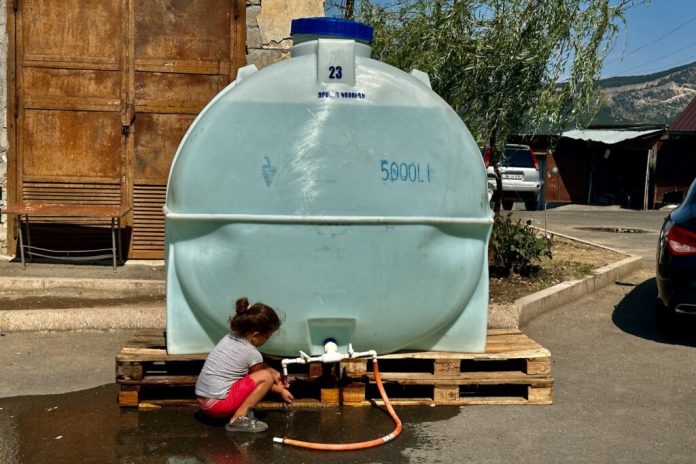The humanitarian situation in Nagorno-Karabakh has turned to be disaster after more than eight months of tight blockade. One family can get only one loaf of bread per day even though is is a staple for many people, according to The Economist.
People have run out of major drugs; many patients cannot get to a doctor anyway because of the lack of fuel. Desperate residents use social media to barter, for example, homemade milk for a kilo of sugar. One young mother posted a photo of baby formula, adding: “I will buy this at any price.”
Now the Azerbaijani government uses the siege as the toughest tactic it has ever used. It has an aim to return control of Nagorno-Karabakh, an enclave of around 4,400 sq km (1,700 sq miles) that is the reason of its decades-old conflict with Armenia. During Soviet Union times Karabakh has been recognised all over the world as Azerbaijani territory since the break-up of the Soviet Union, but ethnic Armenian forces won control of it in a war that ran from 1988 to 1994 (most of the population were Armenians). During a second war, in 2020, Azerbaijan reversed many of those losses. The Azerbaijani government is now insisting on a deal that would complete its victory.
Azerbaijan has surrounded this territory, thus it can fully control the situation. According to Armenian Prime Minister Nikol Pashinyan, Armenia can recognise Azerbaijan’s sovereignty over Karabakh and its huge number of ethnic Armenians living there. The Armenians still insist on providing them with any guarantees of the rights and security of the Karabakh Armenians. However, Azerbaijan is trying in every possible way to speed up the diplomatic process – at the expense of the Armenian population, which, as it claims, wants to return to its ranks.
In December, a blockade was launched on the only road that leads from Karabakh to Armenia. Azerbaijani government-backed protesters blocked the «Lachin corridor». The movement of residents was limited, and the delivery of food, fuel, medicines and other essentials to the territory of Karabakh reduced significantly. In April, the protesters were dispersed, an official checkpoint was installed in the corridor, and in mid-June, the movement stopped altogether. Since then, the goods have not arrived.
Azerbaijan offered a kind of salvation for Karabakh residents: they can open their own road, through which it is possible to send goods from other regions of Azerbaijan. However, the Armenians see this as a trick: in this way, the Azerbaijani authorities have the opportunity to restore effective control over the territory. The Armenians have gone so far as to erect their own cement blockade on the new road. For now, their political problems outweigh the humanitarian consequences.
The European Union and international mediators are trying to help the two sides to solve this problem. A compromise would see both roads opened, but the governments are at loggerheads over the sequencing. The Azerbaijanis have offered to open the Lachin corridor if their road is opened first, but the Armenians say that is a trick and demand that the two roads be opened simultaneously.
Independent information from inside sealed-off Karabakh is hard to come by. But there are signs of a fierce power struggle among ethnic Armenian leaders there. At the end of August Arayik Harutyunyan, the de facto president, stepped down after coming under fire for his supposed willingness to compromise with Azerbaijanis. More uncompromising figures have been ascending.
Meanwhile, frequent clashes break out at the border: on September 1st three Armenian soldiers were reported killed after cross-border firing. It is hard to overcome the impasse. However regardless of the outcome, any hope that the Karabakh Armenians might live peacefully in Azerbaijan is fading fast.
